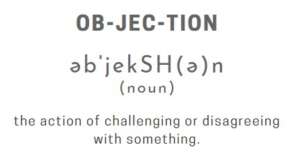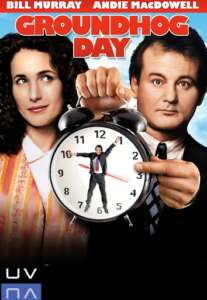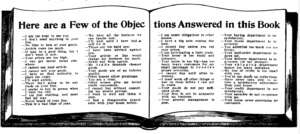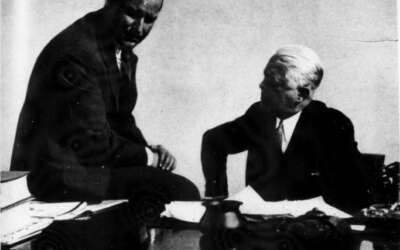The best way to handle sales objections?
I believe there are two approaches.
The first, at the highest level, is to listen when they come up, empathize, respond, confirm and proceed. There are a gazillion articles and resources to dive into how to do this most effectively, where most match some form of this process.
The second, and my favorite, is to disarm them before they come up.
Objections are gonna happen. Lead with the ones you’d be thinking about if you were sitting across the table. That may sound bold. However, I believe it’s bolder (*cough* not smart! *cough*) to know what objections might come up and hope they don’t! By leading with those potential objections (aka, transparency) through empathy, you build a foundation of trust. You are a partner, not a peddler. And when additional objections come up later that maybe you didn’t anticipate, it’s a conversation versus a battle.

In the pursuit of revenue, your clients and prospects are likely to inject logical explanations as to why their status quo is not worth changing, or why their status quo is not worth changing with you. Sometimes they are real and valid. Sometimes they are knee-jerk embellishments to simply get the individual back to whatever was consuming their mind at that given moment.
The list of possible objections hasn’t changed in over 100 years! They are almost word-for-word the same. This image is from the 1907 book, 400 Talking Points.
The pop of an objection has less to do with whether the prospect’s mind is changed now, and more to do with whether we changed their mind during the first interaction.

1993’s Groundhog Day
Ever seen the movie Groundhog Day? In this 1993 movie, Phil Connors (played by Bill Murray), is a wry television weatherman covering the annual Groundhog Day event in Punxsutawney, Pennsylvania. He becomes trapped in the day, forced to relive February 2nd over and over again. In the end, Connors figures out what obstacles come up repeatedly, and spends each repeating day preparing to handle each – in many cases before they even come up.
In the selling world, I believe we can do the same. We have a responsibility to know what valid objections may come up. And, if they come up often, we can not only predict them, but disarm them before they become objections later. In so doing, we speed sales cycles (by helping the customer better assess reality), increase win rates, partially because we’re better qualifying IN the deals we should win. However, we’re also better qualifying OUT the deals we are likely to lose anyway.
Are you higher priced that the alternative solutions? Start with it. During your initial meeting with the client, explain that “Based on what you are trying to achieve coupled with your environment, the price for our solution is likely to be between $X and $Y. If that’s out of whack with your expectations, best we talk more about that now.”
In other words, if you’re talking about a 6-figure solution to a 4-figure buyer, would it not be best to vet that out now, versus 3 months from now after you’ve burned countless hours and resources on this opportunity?
Does your solution not have something another solution does? Start with it. During your initial meeting with the client, explain that “There are certain things we give up to be great at our core. For example, our solution doesn’t have X, while other options do. There’s a reason why we’ve chosen this route, but if X is going to be an important requirement, best we talk more about that now.”
In other words, control the messaging. If X is, in fact, important, would you rather they find out from you, or from the competitor? Would you rather they find out now, or after you’ve burned countless hours and resources on this opportunity?
Have you and your organization not worked with companies like the one you’re pursuing? Start with it. During your initial meeting with the client, explain that “As we dig into this, you might have some concern that the customers we traditional work with are in X industry, and we haven’t done a lot in yours. There’s a reason why we think there’s a good fit here, but if our lack of industry-specific experience is going to be a concern, best we talk more about that now.”
Have previous clients not had perfect experiences, evidenced by easily found reviews and feedback?
When going in for an interview, is one of the experience requirements listed on the job description something you do NOT have?
You can predict! If you were in the shoes of the person are seeking to engage with, what would you bring up? As selling professionals, collect the issues and objections that come up. For the valid ones, be ready to illuminate those up-front, versus waiting for them to come up later.
When you do, you’ll find that transparency builds trust. You’ll find that the most common objections are no longer issues. You’ll find more confidence that you’re working the deals you should be working, and losing the ones you were likely to lose anyway, but faster! You’ll find that your competitors will have a more difficult time messaging against you – because you’ve already exposed your own issues, controlled the message, and likely disarmed them.
You’ll also find that, when objections come up later in the pursuit, they are very specific to the customer, allow you to better diagnose, and are less likely to be invalid attempts to simply swat you away.
I’ll leave the specifics to handling objections to other experts, but my take is this: the best way to handle sales objections may just be to predict them and lead with them. If the obvious ones are happening at the end of the journey, the problem was likely with the beginning. Transparency always wins!
What I teach isn’t for everyone. But I’d love to be a resource for you either way. I have strong opinions on prospecting & social selling – but I don’t teach those workshops. However, I know AMAZING people that do that I’d be happy to refer you to.
My focus? Leveraging behavioral science (with a little sprinkle of history) to optimize your messaging, positioning, formal presenting, negotiations, and all things revenue leadership. Reach out for revenue team keynotes, workshops (both virtual and in-person), or if you have other questions. Just trying to spread the good word of transparency for the betterment of the sales and sales leadership profession.







0 Comments